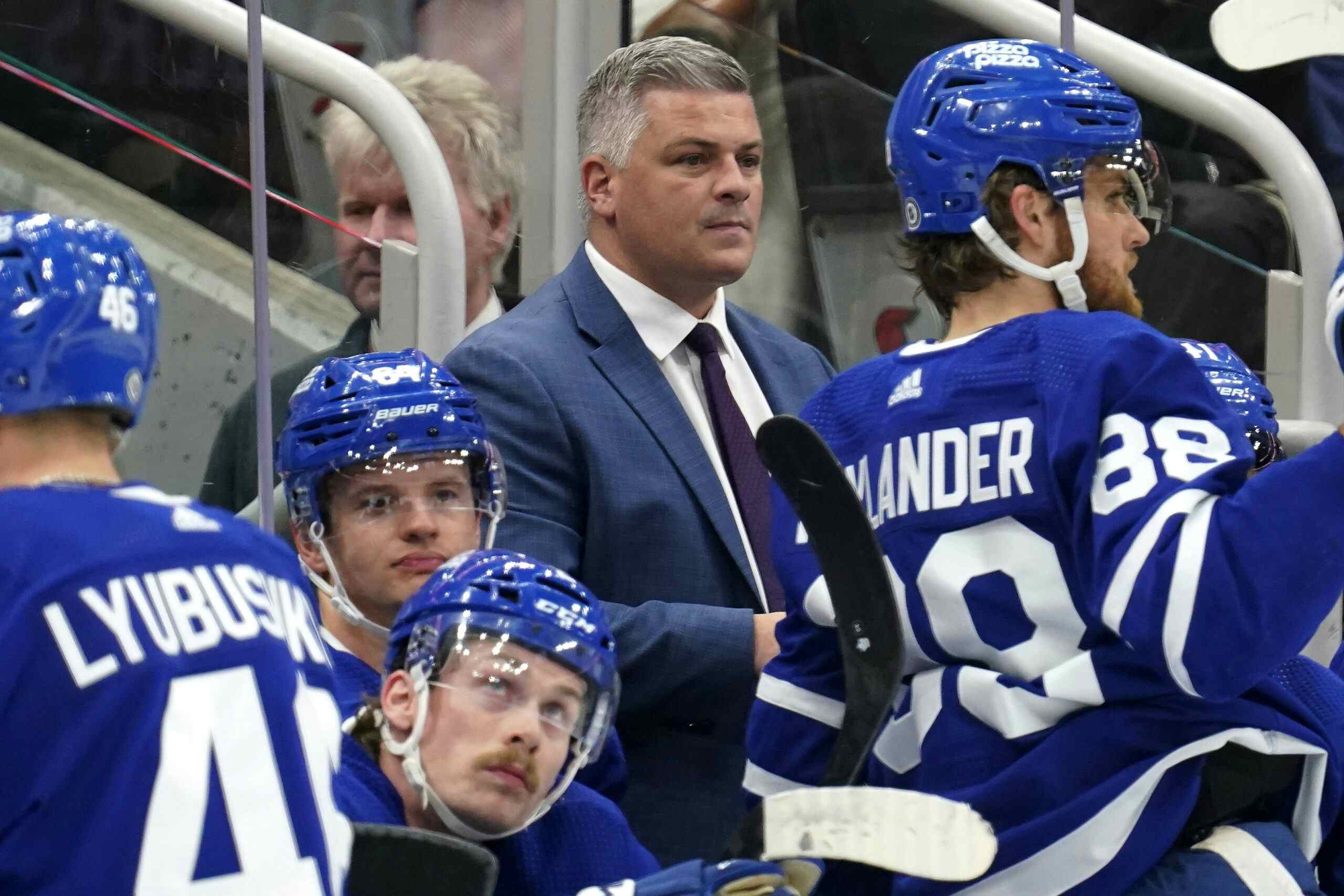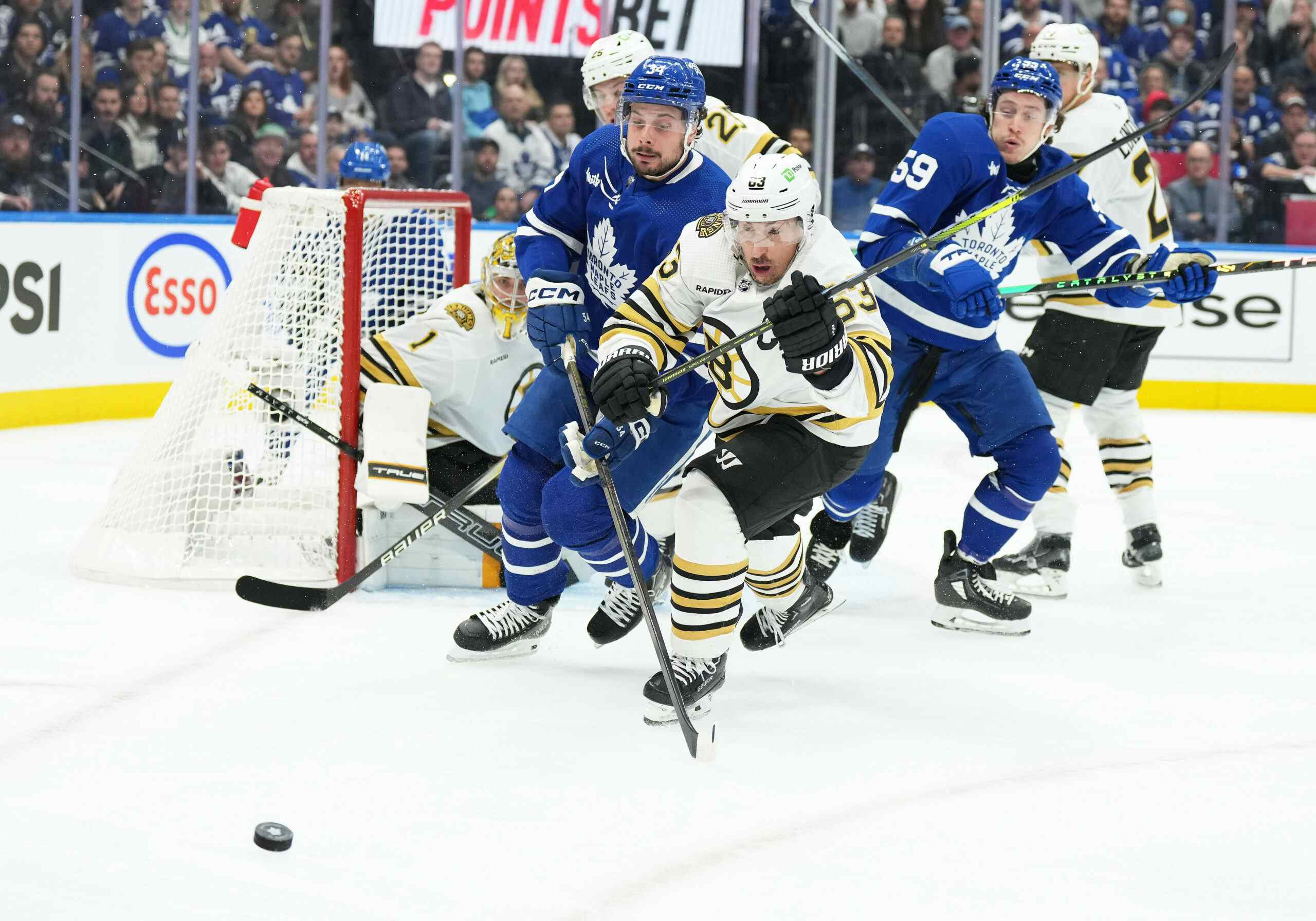2019 NHL Draft Recap: Mike Koster is a puck moving defenceman in the truest sense
By 51Leafs
4 years ago
This is my first of six 2019 NHL Draft Recap articles, in which I do a deep dive into every Maple Leafs selection from the 2019 NHL Entry Draft.
With the 146th overall pick in the 2019 NHL Draft, the Maple Leafs selected 5’9 American defenceman, Mike Koster. Koster, the 2nd overall selection in the 2017 USHL draft, spent time in high school and the USHL last season.
In order to get a glimpse of what Koster has to offer, I watched five games of his games from this past season: 1 from his time in the USHL game and 4 when he participated in the Hlinka-Gretzky Cup, where Koster was on Team USA’s top pair, 2nd power play unit and top penalty-killing unit.
Here’s my scouting report on him, including where I think he’s at as a player, and what his future projection is.
Scouting Report
As you may have been able to tell from the title of this article, Koster is a puck-moving defenceman. His transition game is his best asset, and it will be the driving force behind getting him to the NHL, should he ever get there. There are two main aspects of the transition game: transporting the puck out of your zone and into the other, and stopping the opposition from doing that to you.
Koster is very impressive in both of these areas.
Puck Moving Ability
There are two ways to successfully move the puck up the ice: skating it there yourself or passing it to a teammate. Koster seems to excel in both of these, making him a dynamic puck mover.
Many aspects go into being a good puck rusher. You need to be a good skater (speed and edgework are important). You need to have good hands that allow you to fake out and deke around oncoming forecheckers. And you also need to have a plan, allowing you to understand what you’re trying to accomplish. Koster has all of those things, and this is one of my favourite clips that shows all of it in one example:
Koster picks up the puck in the corner and shortly after that takes a couple of powerful strides so that he can pick up speed. While I don’t think that Koster’s straight-line speed is *great*, it’s definitely good enough to allow him to be a very good puck mover at this level.
Koster has his head up, and he recognizes that there are three Finns at the line, so it’ll be tough for him to cleanly break into the zone. Also, his teammates are changing. Going in 1-on-3 with nobody back seems like a horrible idea, so Koster turns back to his own zone. We get a nice glimpes of his beautiful backwards skating and edgework as we wait for his teammates to change. Koster then picks up speed once more, makes a little move around #34, and is able to clear into the zone.
Unfortunately, his centring pass isn’t successful, but we still get a glimpse of Koster’s ability to rush the puck, and it looks very promising.
This next clip is another successful rush by Koster, and we get more of a glimpse at what he can do with his hands in this one:
We see him cutting around and between defenders, making two successful moves. Koster is hauled down so we don’t get to see him finish off the play, but he draws a penalty nonetheless.
Here’s one more, just for fun. We get a nice glimpse at Koster’s edgework here, as we see him using the heel-to-heel technique, or as most Leaf fans call it, “The Bracco”.
Now that we’ve gone over how Koster carries the puck himself, lets check out how he passes to his teammates.
Koster always has his head up when the puck is on his stick, and he can identify when and where he needs to pass to. Koster manages risk well, and while he does turn the puck over sometimes (just like every other puck moving defenceman), he does not commit turnovers often. Once he identifies who he needs to get the puck to, Koster is an accurate passer. He rarely misses a pass, and his passes are hard and right on his target’s tape very often.
Here he is surveying his options, and then sending a slap-pass onto the tape of his teammate for a good chance on the rush.
Here’s another example of Koster taking a look at his options and then firing an accurate pass up to a teammate.
On this last one, Koster is under pressure and in an important moment of the game. He quickly looks up, lifts a pass over two sticks and right to his winger, and allows USA to complete a much needed, successful breakout.
If you want more Koster puck-moving fun, here’s a YouTube video I threw together. Most of the clips in the video are included in this article, but there are a few more as well.
Gap Control/Entry Defence
As I mentioned before, there are two main aspects of the transition game. We’ve talked about the first part, which now brings us to the second part.
Koster is very good at defending his blue line. He plays a tight gap in transition, keeps his eyes on the opponent’s chest (and not the puck, which is what will get you into trouble), and has a good stick that allows him to take pucks off his opponent while blocking passes.
Here’s a good example.
Koster plays a very tight gap on Kirby Dach here. When he realizes that Dach has passed the puck over to Alex Lafreniere, Koster switches off and plays very aggressively on Lafreniere. He has good stick positioning and as a result, deflects the pass out of harm’s way.
Here’s another example. Koster has his eyes on Lafreniere’s body, and he has his stick out. He plays Lafreniere closely and ends up taking him to the boards where his teammate can then grab the puck.
Overall, Koster excels in transition. He strikes me as the type of defenceman who will excel in zone exit/entry stats as well as those accounting for zone entry denial. By extension, he will probably do very well in puck possession metrics, as well.
Offensive Game
Despite being an undersized, skilled defenceman, Koster doesn’t strike me as the type of player that will be a great point producer or a power play quarterback at the next level.
Most of Koster’s offence comes off the rush. He likes to jump in to give his team an odd-man rush, and when he’s carrying the puck he can create some offence thanks to his skating and skill.
Here’s an example:
Koster shows some nice patience and uses his edgework to move around the sliding Canadian player. He puts a nice centring pass towards the goal, but the Americans fail to convert.
Koster hasn’t shown me that he can be a dynamic, creative attacker from the point though, which is what makes me skeptical of his future running an NHL power play. He tends to shoot the puck too often when he should be looking for the best play available. His shot is fine, but it’s not good enough to justify that.
Defensive Game
While I don’t necessarily think that Koster is horrible in his own end, he has some warts I’d like to see be ironed out in his defensive game.
Being a 5’9, 172lbs defenceman, Koster isn’t the strongest in puck battles and he’s not gonna be able to clear big forwards from the front of his net. If he can continue to get stronger, he could at least improve in this regard, but he will always have these challenges as a smaller player.
As well, Koster can get caught puck watching at times. Here’s an example:
Koster is staring at the puck the whole time, and doesn’t see the eventual goal scorer standing right behind him. The correct play there would have been to tie up the man, but instead, Koster goes lunging for the puck, and ultimately gets burned for it.
Future Projection
Judging by the information shown on Elite Prospects, it looks as if Koster will play a full season in the USHL next season before heading to the University of Minnesota in the NCAA. Koster will have a ton of time to iron out his defensive game, increase his straight-line speed and get a little stronger. I think that we could see Koster develop into a Matt Gryzleck type of player: maybe not the best point producer or a shutdown type, but an undersized defenceman who excels in transition and is the darling of the analytics community.
I think Koster could get even better than that too, if he learns how to use his tools correctly in the offensive zone. He’s a good passer and a good skater, and if he could begin to use that to his advantage on the power play, he may very well outperform his draft position by a long shot.
Conclusion
Overall, I think that Koster is the type of player that you should bet on in the later rounds. He has talent, plays the way that the game is going, and probably should’ve been selected roughly a round or so earlier.
He’s not a lock to make it to the NHL and he has hurdles that he has to climb in order to get there, but taking a player who has skill and lacks strength is way better than taking a refrigerator (like the Leafs did in the past, specifically in the 2016 draft).
Recent articles from 51Leafs





